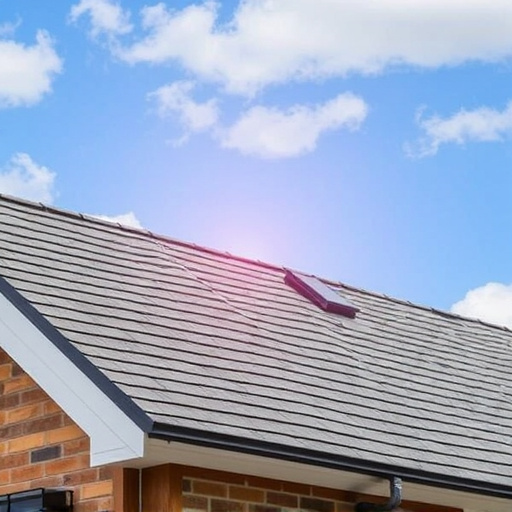Eco-friendly roofing alternatives offer enhanced aesthetics, long-term cost savings, increased home value, and reduced carbon footprint through recycled content, improved insulation, and sunlight absorption. Energy-efficient roofs minimize heat transfer, reduce energy bills, and lower maintenance costs. Solar panels, green roofs, cool roofs, and recycled materials are game-changers, promoting sustainability, energy independence, and healthier ecosystems while providing practical, functional solutions for modern living. Local governments incentivize these practices with tax credits and rebates, driving a growing trend towards sustainable roofing systems that mitigate climate change and urban heat islands.
“Discover the evolving landscape of roofing with an exploration of eco-friendly alternatives. In today’s world, choosing energy-efficient roofing options not only reduces environmental impact but also offers long-term benefits. From traditional materials to cutting-edge technologies, this article provides a comprehensive overview. Learn about solar panels, green roofs, cool roofs, and recycled materials that are revolutionizing the industry. Understand the advantages of energy-efficient systems and explore practical steps for adopting sustainable roofing practices.”
- Traditional vs. Eco-Friendly Roofing Materials
- Benefits of Energy-Efficient Roof Systems
- Solar Panels: A Rooftop Revolution
- Green Roofs: Nature's Insulation Solution
- Cool Roofs and Their Environmental Impact
- Recycled Materials: Reducing Waste with Style
- Ventilation Systems: Essential for Eco-Friendly Design
- Energy Star Ratings: Guidance for Sustainable Choices
- Local Regulations and Incentives for Eco Roofs
- Future Trends in Sustainable Roofing Technologies
Traditional vs. Eco-Friendly Roofing Materials

Traditional roofing materials, while commonly used, often contribute to environmental concerns due to their production methods and limited recyclability. In contrast, eco-friendly roofing options are designed with sustainability in mind, aiming to reduce a building’s carbon footprint from the very top. These innovative alternatives offer not just an aesthetic appeal but also significant long-term cost savings on energy bills through roofing systems that are energy-efficient.
One such option is the growing popularity of energy-efficient replacement shingles and roofing systems with built-in solar capabilities. These advanced materials incorporate recycled content, improve insulation, and absorb sunlight for heat reduction—all while potentially generating clean energy. By choosing eco-friendly roofing, property owners not only contribute to a greener planet but also enjoy lower utility costs and increased home value, making it a smart investment in both the environment and their pocketbook.
Benefits of Energy-Efficient Roof Systems
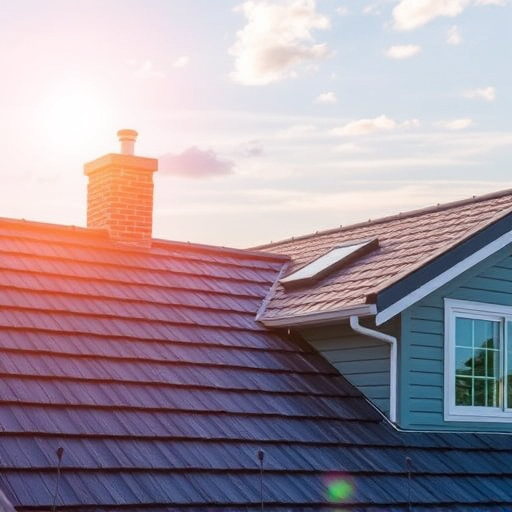
Energy-efficient roofing options not only contribute to a greener environment but also offer significant benefits in terms of cost savings and improved building performance. By integrating energy-efficient features, such as reflective coatings and high-performance insulation, these roofing systems can reduce the amount of heat transferred into the building interior, leading to lower cooling costs during hot months. This is particularly beneficial for regions with extreme climates.
One of the most promising innovations in this field is the incorporation of solar panels directly into roofing materials. Roofing systems with built-in solar technology generate clean energy while providing traditional protection against weather elements. Additionally, thermal insulation for flat roofs plays a crucial role in maintaining indoor comfort and reducing energy consumption. These energy-efficient roofing innovations not only promote sustainability but also enhance the overall energy efficiency of buildings, making them more comfortable and cost-effective to maintain over time.
Solar Panels: A Rooftop Revolution
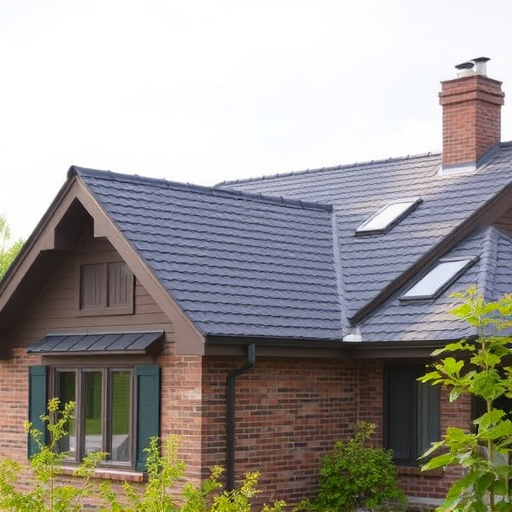
Solar panels have emerged as a leading rooftop revolution in the pursuit of eco-friendly and energy-efficient roofing options. These innovative technologies transform rooftops into powerful generators, harnessing the sun’s energy to power homes and businesses. By integrating solar panels, property owners not only contribute to a cleaner environment but also enjoy significant cost savings on their energy bills. The shift towards solar energy represents a substantial step towards roofing solutions for energy independence, allowing individuals to break free from traditional energy providers.
Beyond energy savings, solar panels offer numerous advantages that enhance the overall sustainability of buildings. They play a pivotal role in promoting roofing for improved indoor air quality by reducing the reliance on fossil fuels and minimizing greenhouse gas emissions. Moreover, the growing popularity of green roofing systems benefits both the environment and building occupants, creating sustainable habitats that contribute to a healthier planet.
Green Roofs: Nature's Insulation Solution
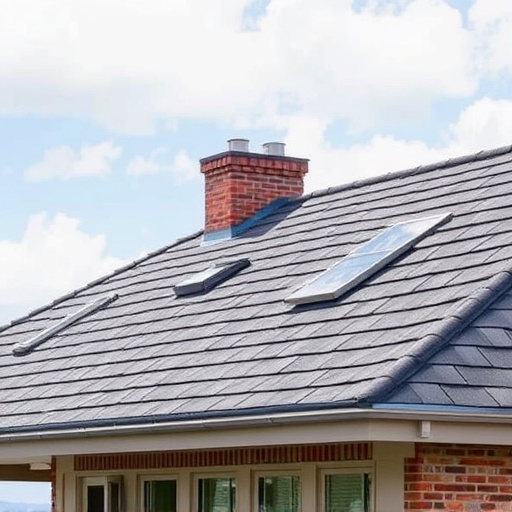
Green roofs are an innovative and eco-friendly solution that brings nature into urban spaces, offering both aesthetic appeal and practical benefits. This type of roofing involves planting a layer of vegetation on top of a building’s structure, creating a sustainable and insulating barrier against extreme temperatures. By incorporating plants, these green oases provide superior thermal efficiency compared to traditional roofs, resulting in long-term cost savings on energy bills. Not only do they reduce the urban heat island effect, but they also help absorb rainwater, improving drainage systems and mitigating the impact of storms.
This natural insulation solution is a game-changer for those seeking energy-efficient roofing options. The plants act as a living barrier, protecting the building below from intense sunlight during summer and providing insulation against cold winds in winter. Moreover, sustainable roof replacement ideas like green roofs contribute to a healthier environment by promoting biodiversity, reducing noise pollution, and improving air quality, making them an attractive choice for environmentally conscious homeowners and businesses alike.
Cool Roofs and Their Environmental Impact
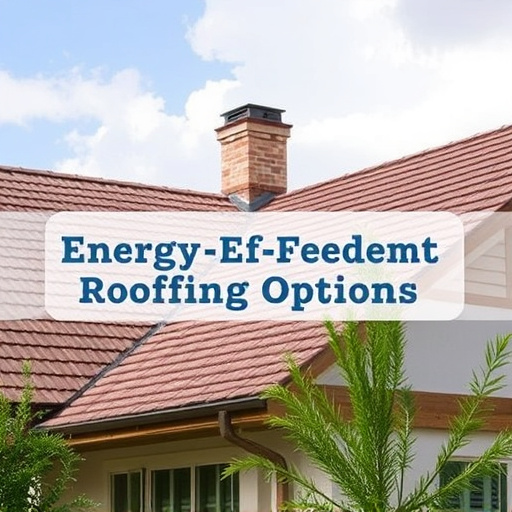
Cool roofs are a popular eco-friendly roofing option known for their ability to reflect sunlight and reduce heat absorption. This feature is particularly beneficial in urban areas, where buildings absorb significant amounts of heat from traditional dark rooftops, leading to what’s known as the ‘urban heat island effect’. By keeping buildings cooler, cool roofs can help lower energy consumption for air conditioning, thereby reducing greenhouse gas emissions.
In addition to their environmental benefits, cool roofs also offer long-lasting durability and cost savings. Energy-efficient roofing options like those with solar panels integrated into the design or long-lasting energy efficient shingles contribute to a building’s overall sustainability. These modern alternatives to traditional roofing provide homeowners and businesses with an array of eco-friendly roof choices that not only decrease their carbon footprint but also offer practical, functional solutions for modern living.
Recycled Materials: Reducing Waste with Style
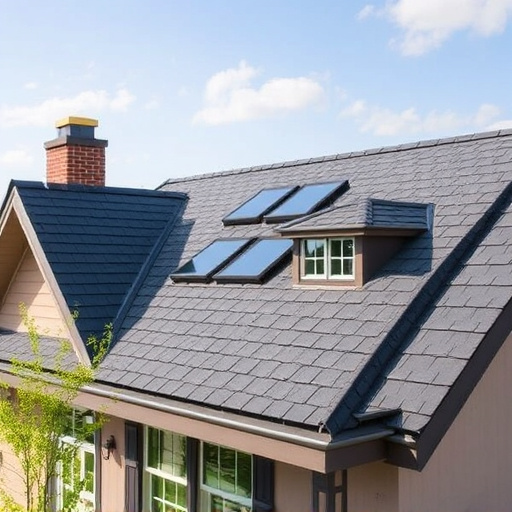
Recycled materials are revolutionizing the roofing industry as an eco-friendly and stylish alternative. By utilizing recycled content like rubber, plastic, and metal, these materials reduce waste and offer a unique design opportunity. This innovative approach not only minimizes environmental impact but also contributes to energy efficiency in buildings. Many recycled roofing options boast high energy efficiency ratings, providing excellent insulation and reducing energy savings through roof design. Moreover, their durability ensures long-term cost savings on energy bills, making them a smart choice for both homeowners and commercial property owners looking to go green without compromising aesthetics.
Ventilation Systems: Essential for Eco-Friendly Design

Effective ventilation systems are a cornerstone of eco-friendly roofing design. By facilitating proper air circulation, these systems help regulate indoor temperatures, reducing the need for energy-intensive cooling and heating. This not only minimizes a building’s carbon footprint but also extends the lifespan of both the roof and the equipment it supports. Modern ventilation technologies, such as power vents and ridge vents, are designed to optimize airflow while minimizing energy loss, making them essential components in any sustainable roofing strategy.
Moreover, incorporating environmentally conscious roofing choices like solar reflective coatings can significantly enhance energy efficiency. These coatings absorb less heat from the sun, thereby lowering roof temperatures and reducing the amount of energy required for cooling. As a result, buildings equipped with such measures contribute to broader sustainability goals while potentially saving on utility bills. This shift towards energy-efficient roofing innovations is pivotal in the ongoing global effort to combat climate change, demonstrating that intelligent design can be both environmentally responsible and cost-effective.
Energy Star Ratings: Guidance for Sustainable Choices
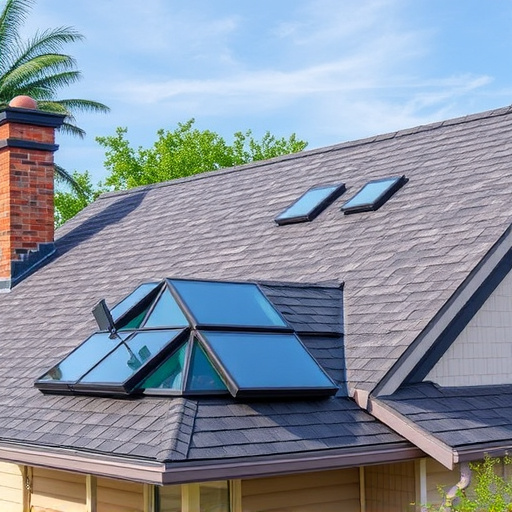
When considering eco-friendly roofing options, Energy Star ratings serve as a reliable guide for making sustainable choices. These ratings assess the energy efficiency of various roofing materials and systems based on strict criteria, ensuring consumers select products that not only reduce environmental impact but also offer long-term cost savings. By opting for Energy-Efficient Roofing Options with high Energy Star ratings, homeowners and businesses can contribute to reducing their carbon footprint through roofing while enjoying lower utility bills.
In addition to the direct benefits of reflective coatings for roof energy reduction, green roofing systems offer a range of advantages. From improving indoor air quality to providing habitats for local wildlife, these systems enhance the overall sustainability of buildings. By integrating eco-friendly roofing practices, individuals and organizations can actively participate in mitigating climate change, making significant strides towards a greener future while enjoying the aesthetic and functional benefits that come with such innovative solutions.
Local Regulations and Incentives for Eco Roofs
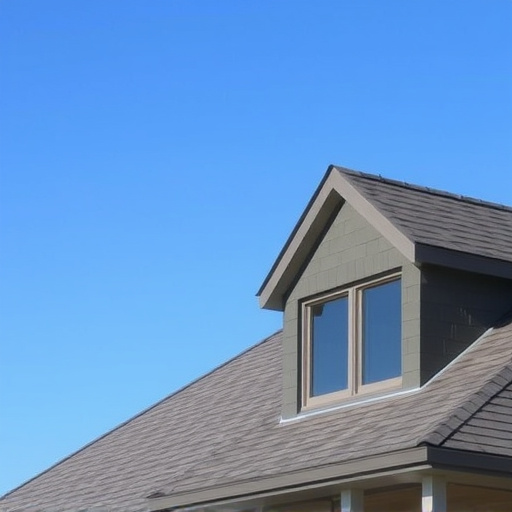
Many cities and towns are now introducing local regulations that encourage or even mandate eco-friendly roofing practices. These guidelines often include incentives for homeowners and businesses to adopt energy-efficient roofing options, such as reduced permits fees, tax credits, and rebates. The push for green roofs is driven by their significant environmental benefits, including improved urban heat island effects through reflective roofs, which can lower cooling costs. Additionally, the use of vegetative or green roofs offers excellent thermal insulation for flat roofs, thereby enhancing energy savings through roof design.
Local governments recognize that these roofing options not only reduce a property’s carbon footprint but also contribute to water conservation and improved air quality. As a result, they are actively promoting sustainable practices by offering incentives that make eco-friendly roofs more accessible and affordable. This shift towards green infrastructure is expected to gain momentum as communities embrace the long-term advantages of energy savings through roof design and the overall enhancement of urban sustainability.
Future Trends in Sustainable Roofing Technologies
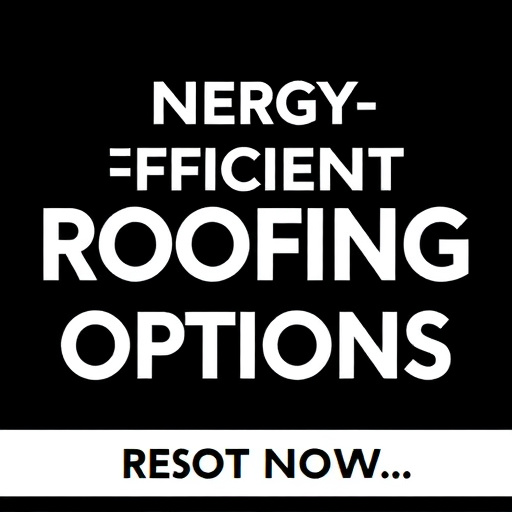
The future of roofing is bright and green, with an increasing focus on sustainable materials and technologies. One notable trend is the rise of green roofing systems benefits, which involve planting roofs with various plant species, offering insulation, absorbing rainwater, and enhancing biodiversity. These systems not only contribute to a building’s overall eco-friendliness but also provide aesthetic appeal and reduced urban heat island effects.
Additionally, advancements in long-lasting energy efficient shingles are making significant strides. Modern technologies enable manufacturers to create shingles that reflect sunlight, improving the energy efficiency of buildings in warm climates. This shift towards roofing solutions for warm climates is crucial as it helps mitigate the impact of extreme heat on structures and reduces the reliance on traditional cooling systems, ultimately leading to lower carbon footprints.
In light of the above, it’s clear that eco-friendly roofing options not only contribute to a healthier environment but also offer significant energy savings and long-term cost efficiencies. From traditional materials like recycled tiles to innovative solutions such as green roofs and solar panels, there’s an energy-efficient roofing system suited for every need and budget. As we look towards the future, sustainable roofing technologies are poised to play an even more pivotal role in shaping a greener planet. Remember that making informed choices today can lead to substantial environmental benefits for generations to come.
